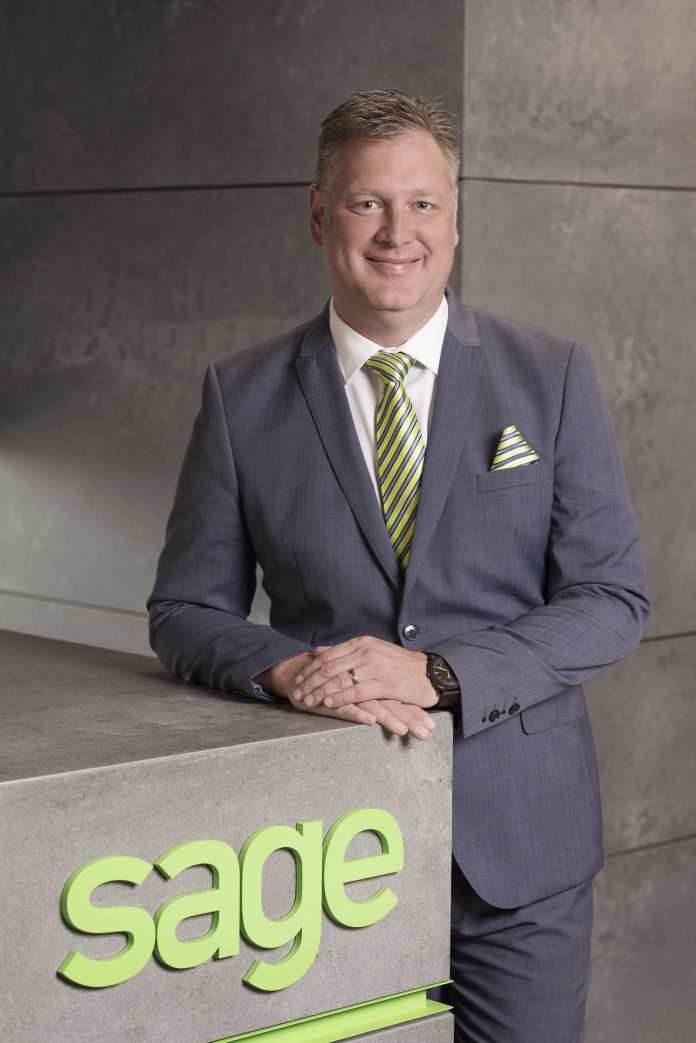[ad_1]

An accountant’s new normal is a state of constant and rapid flux. The rules are shifting all the time and reflect how the government may choose to pitch its loan programmes.
In this swiftly evolving environment, a whole host of challenges emerge every day. For instance, to provide a cash flow projection tomorrow, accountants need access to a year’s worth of bookkeeping data today. They also need the time and resources to work through that data quickly and efficiently.
Fortunately, technology is helping accountants automate business functions and collaborate to provide a faster, more agile and varied consultative service. Now more than ever, those that fail to embrace technology run the risk of falling behind.
Learning from the disruptors
You don’t need to be disruptive to be the disruptor. Across multiple industries, disruption tends to follow a familiar pattern. Incumbent players prove to be clumsy, resistant to change and fail to adopt new capabilities. In short, they gradually stop delivering the value customers seek and are usurped by more innovative and agile competitors or new market entrants.
Accountants aren’t experiencing the same level of competition from technologically agile startups as some other industries. However, there is still significant customer-driven disruption. As customers struggle to adapt and maintain continuity post-COVID-19, they’re increasingly turning to accountants for advice on a range of issues, from acquiring government grants to generating new sources of revenue.
To rebuild a practice in this new environment, accountants should learn key lessons about disruption: it’s not just about delivering a better service than your competitors, but also providing new offerings that others aren’t. This can be achieved through assessing market conditions, altering business practices and, most importantly, understanding customers and what will really help them.
To give customers targeted, expert advice, accountants should understand every aspect of their business. This level of understanding can only come from strong visibility and accessibility to customer data. However, in a number of cases, that is simply not an option. The data is often spread across different parts of the customer’s business, and complex calculations and data entry can sap valuable time.
The first step to disruption is to embrace the cloud. Moving customer data to the cloud makes it far more accessible and easier to analyse. Accountants can review the data in real-time, improving customer service and the speed of delivery. Cloud accounting tools also make it easier to create reports, view business finances, and model business plans and outcomes for customers.
With the right technology, accountants are empowered to master their customers’ data. Armed with fresh insight, they can then provide targeted advice to fill the vacuum and introduce new services like consultancy on business transformation.
The first to finish
However, customer understanding is only half the battle. In the new normal, the pace of change is accelerating at an unprecedented rate. Decisions made under pressure can have major repercussions for a business in the years to come. Accountants must invest seriously in strengthening process efficiency to deliver at the speed required and minimise human error or inefficiencies that may creep in during manual processing.
In the current landscape, accountants don’t have the time for staff to spend on repetitive and tedious data management tasks. Yet, many accountants continue to expend precious energy and resources on classification and cleaning. Instead, they should look to robotic process automation (RPA), and use software and AI or machine-learning capabilities to handle high-volume repeatable tasks.
AI can review millions of transactions that would traditionally have taken hours to achieve manually – spotting anomalies and making recommendations instantly. Automated solutions are innovative and immune to human error, while improving accuracy and delivery time. The best thing is that AI-embedded solutions will only get better with time. Gradually, less intervention will be needed by the practice’s human resources. AI can also become more proactive in assigning resources because it adapts to the flow of customer data in the business.
Technology is the true enabler of our time, helping accountants seize the opportunity to be change-makers rather than mere spectators. Adopting cloud technology gives accountants the ability to remotely manage their customer data, accounts, and people all in one place.
AI completes the circle, helping to streamline data entry and admin processes through automated invoicing systems. As more processes continue to become automated, accountants will have more time for what’s most important – building relationships with customers and meeting their needs.
[ad_2]
Source link
